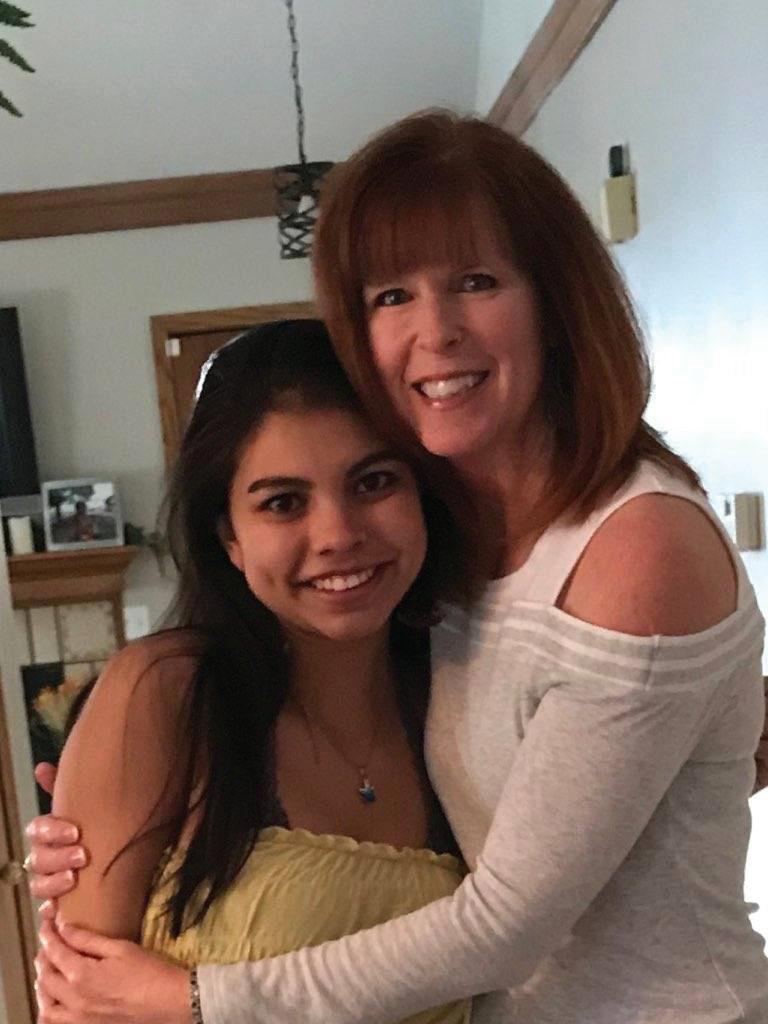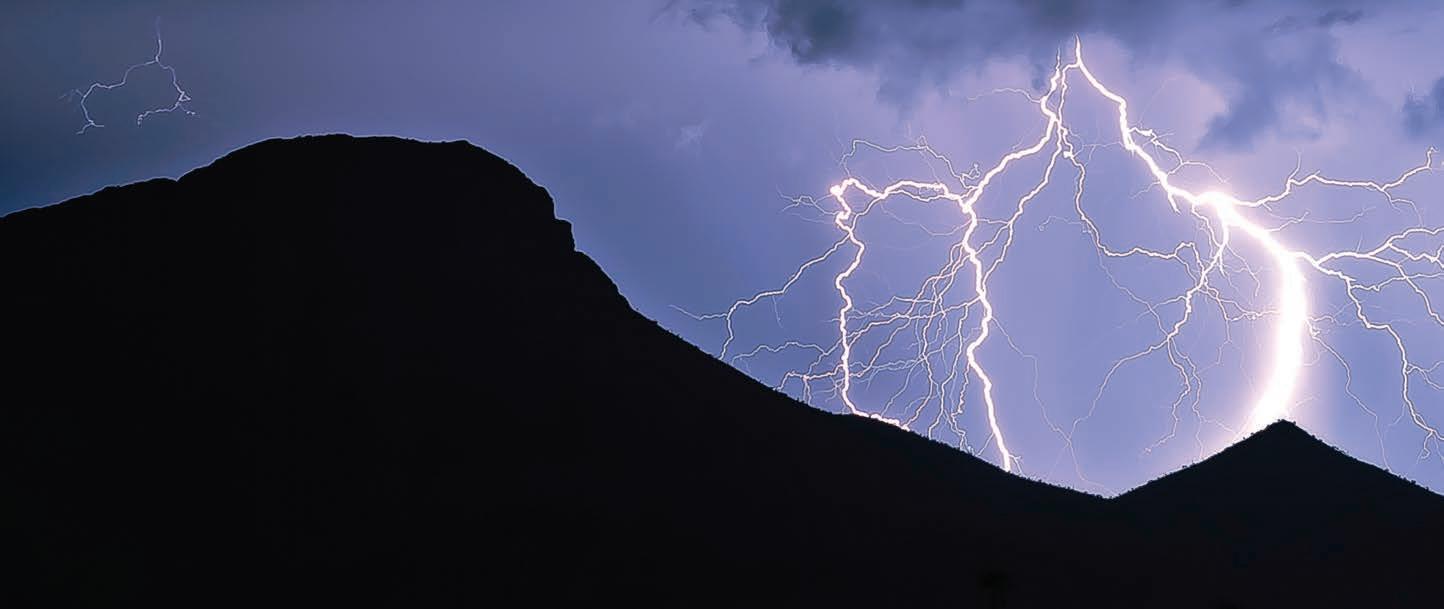
13 minute read
VACANCY
“I am in support of acknowledging the recent election and recommend that the board nominate the candidate who received the third-most amount of votes from the South Suburban voters May 2 to ll the vacant position, as we have already expressed who we feel should represent our district and our dollars,” added a Littleton property owner.
Watson, who noted the small margin between her vote count and Barrere’s, said she thinks the board should consider the election results.
“Even if they don’t accept me as the third-place nisher, Alexis Barrere is very quali ed and … I would absolutely approve of them selecting Alexis,” she said in an interview with Colorado Community Media.
“South Suburban has a choice to have a board of directors consisting of elected representatives or they can disregard the input from the community and handpick a board member,” she continued. “After attending the recent board meeting, it is obvious to me that South Suburban is going to ignore the results of the recent election and hold a meaningless application process.”
About Letters To The Editor
Colorado Community Media welcomes letters to the editor. Please note the following rules:
• Email your letter to letters@coloradocommunitymedia.com. Do not send via postal mail. Put the words “letter to the editor” in the email subject line.
• Submit your letter by 5 p.m. on Wednesday in order to have it considered for publication in the following week’s newspaper.
• Letters must be no longer than 400 words.
• Letters should be exclusively submitted to Colorado Community Media and should not submitted to other outlets or previously posted on websites or social media. Submitted letters become the property of CCM and should not be republished elsewhere.
• Letters advocating for a political candidate should focus on that candidate’s qualifications for o ce. We cannot publish letters that contain unverified negative information about a candidate’s opponent. Letters advocating for or against a political candidate or ballot issue will not be published within 12 days of an election.
Grubb said the board’s decision to have an application process shows their extra attention to being transparent.
“Legally, the board of directors can appoint whomever they want,” she said. “ ey have decided to make this process more transparent and create an application process for any interested parties.”
She said the application process has nothing to do with the election.
“ e timing of Dave Lawful’s unexpected passing just happens to be eight days after the election,” she said. “But this process would be the same if it occurred any time after the election.”
Application details
King said the call for applications would go out on May 25 and will be due on June 6. e board will have until June 8 to submit its rankings, she said.
Sta expects the board to be able to appoint and swear in a new board member at its next board meeting on June 14, however, the board may decide to delay this if they would like.
Applications will be available on the district’s website and information on the process will also be available on its social media channels.
• Publication of any given letter is at our discretion. Letters are published as space is available.
• We will edit letters for clarity, grammar, punctuation and length and write headlines (titles) for letters at our discretion.
• Please don’t send us more than one letter per month. First priority for publication will be given to writers who have not submitted letters to us recently.
• Submit your letter in a Word document or in the body of an email. No PDFs or Google Docs, please.
• Include your full name, address and phone number. We will publish only your name and city or town of residence, but all of the information requested is needed for us to verify you are who you say you are.
• Letters will be considered only from people living in Colorado Community Media’s circulation area in Adams, Arapahoe, Clear Creek, Denver, Douglas, Elbert, Je erson and Weld counties.
• Do not use all caps, italics or bold text.
• Keep it polite: No name calling or “mudslinging.”
Turn To The Colorado Sun For News Across The State

The Colorado Sun is a journalist-owned, award-winning news outlet that strives to cover all of Colorado so that our state — our community — can better understand itself.
In this way, The Sun contributes to a more vibrant, informed and whole Colorado.
The Sun, launched in 2018, is committed to fact-based, in-depth and nonpartisan journalism. It covers everything from politics and culture to the outdoor industry and education.
Now, The Colorado Sun co-owns this and other Colorado Community Media newspapers as a partner in the Colorado News Conservancy. The Sun is CCM’s partner for statewide news.
For Colorado Sun stories, opinions and more, and to support The Sun’s misssion as a member or subscriber, visit coloradosun.com.
‘It’s time for me to speak up’









Sitting in her home in Centennial, surrounded by photos of her daughter, Lujan described Lauren’s many talents, from her beautiful singing voice to her athletic skills.
“People always say, you know, someone lit up a room. She really did,” Lujan said. “I feel blessed that she was in my life, even for a short time. She taught me a lot.”
Lauren lived with the mentality that she could accomplish whatever she put her mind to, her mom said.
“One of the greatest things about Lauren is she just — she had such a big heart,” Lujan said. “She was amazing because she found the beauty in everything.”
On March 29, 2020, Lauren was on spring break and staying at her father’s house, according to the lawsuit. She left the house for a few hours, which is when her parents thought she met up with someone, whom she communicated with via Snapchat, to get the painkiller Percocet.
The next morning, on March 30, Lujan was working in her office, which is near Lauren’s father’s house. She remembered getting a phone call from Lauren’s father, who said he did not think Lauren was breathing and that she was dead.

Lujan went to the house, where she saw paramedics and an ambulance.
“They wouldn’t let me in. So, I’m trying to, like, storm into the house to get to her and they wouldn’t let me in, which was horrible. And then I followed the ambulance to the hospital,” she said.
“Supposedly, she was alive when she went to the hospital,” Lujan recalled. “They kept coming in and telling me, ‘OK, well, we got a heartbeat.’ And it was like, ‘It’s really faint.’ And yeah — nightmare.”
According to the lawsuit, the Percocet that Lauren took was a pill laced with fentanyl. Lauren died from fentanyl poisoning on March 30.
The National Institute on Drug Abuse explains on its website that when people overdose on fentanyl, their breathing can slow or stop, which decreases the amount of oxygen reaching the brain and can lead to death.
Song for Charlie is a national nonprofit that raises awareness about fake pills made of fentanyl. It argues that when someone dies after taking a fake pill made of fentanyl, these deaths should be classified as “poisoning” rather than “overdose” because the person did not know what they were ingesting.
It took Lujan a long time to find out what had happened, she said.
“I don’t know if it was six months later, or nine months, or a year later, really, when I finally read the autopsy report and realized it was fentanyl, and that she took one Percocet and it was laced,” Lujan said.
“I didn’t really think much more about it because the grief and the sorrow is overwhelming. And for me, not thinking about it, not dealing with it, was my defense mechanism,” she said. “I was just trying to deal with, you know, coping with the loss of my daughter.”
A year ago, Lujan began wondering what happened with the police investigation. She contacted the Arapahoe County Sheriff’s Office and spoke with someone who essentially said, “‘Once we realized it was (Snapchat), there was nothing more we could do,’” she recalled. At that moment, she felt emotionally overwhelmed and was unable to think straight, she said.

“And so, I just let it go,” she said.
But then a friend told her it was time “to get angry about this,” Lujan recalled
One day, Lujan’s friend mentioned she heard on the news about the Social Media Victims Law Center and a lawsuit against Snapchat. Lujan did some research and reached out to the center
“I feel like it’s just time for me to not sit back anymore,” Lujan said. “It’s time for me to speak up.”










“I kind of look at it like she was murdered. And I’m upset because Snapchat doesn’t seem to do anything,” she said. “I almost feel like these drug dealers are protected behind Snapchat.”
The fight against Snapchat
The wrongful death lawsuit alleges that Snapchat created an environment that allows drug dealers to “operate in a manner that directly contributed to the deaths of nine minors and young adults,” according to a Social Media Victims Law Center news release.
The nine minors and young adults are Lauren Lujan, Moses “Malik” Majekodunmi, Juan Jiménez Trujillo, Cole Brown, Michael Leonardi, Dylan Moore, Kevin Andrew Hutchings, Jaylen Penix and Allie Higdon.
Each of these individuals died after taking fentanyl-laced pills and/or edibles purchased from drug dealers connected to them by Snapchat, according to the news release.
“I want to be really clear — we don’t condone the sale of prescription drugs outside of a doctor’s prescription. We also understand that young people make bad decisions. They don’t deserve to die for it,” said Matthew Bergman, founding attorney of the Social Media Victims Law Center.
A wrongful death lawsuit alleges that a person lost their life as the result of the misconduct of another, Bergman said.
“In this case, the negligent and unreasonably dangerous design of the Snapchat platform,” he said.
























He noted that it does not mean there are no other factors at play, and while he acknowledges people should not use prescription drugs without a prescription, “that doesn’t mean that they needed to die for it.”
“And that doesn’t mean that it’s appropriate to absolve Snapchat of its responsibility for contributing to the situation that led to the child’s death,” he said.
The lawsuit alleges that Snapchat’s platform “purposefully obstructs parental supervision” and “enables (drug) dealers to locate and access nearby minors and young adults,” per the news release.
Bergman said Snapchat provides people the opportunity to commit a crime knowing that the evidence is destroyed after the crime is committed, since Snapchat automatically deletes messages.
“The disappearing message feature allows drug dealers to actually put a menu or a smorgasbord of drugs online, knowing that the evidence of their crime will … disappear,” Bergman said. “The only benefit of the disappearing messages is to perpetrate crimes.”
Bergman noted Snapchat also has a geolocating feature, also called a “Snap map,” that allows users to share their location with one another. This feature allows for drugs to be delivered “like DoorDash or Uber Eats,” he said.
A third feature that Bergman said “unnecessarily facilitates young people hiding, forever, evidence of their solicitation of drug dealers” is Snapchat’s “my eyes only” feature, which allows for users to hide content behind a passcode on the app.
“They have made (an) intentional decision to not change the architecture of their platform, presumably because one of the appeals of the platform is to encourage kids to evade parental responsibility,” he said about Snapchat. “They’ve decided to not implement readily available design modifications because it reduces engagement, and their profits are tied to engagement.”
The lawsuit’s prayer for relief, meaning the damages and other remedies it is seeking, includes requests for punitive damages, loss of future income and earning capacity of each of the nine people, and monetary and emotional damages suffered by plaintiffs.
“This is not a case that is about the money. These families have suffered the worst loss that anybody can imagine,” Bergman said. “If through these efforts, we can prevent one family from going through this loss … then it’s worth it.”
The relationship between fentanyl and social media
At least every other day, the Social Media Victims Law Center hears from another parent who lost a child to fentanyl, Bergman said.
“I can’t tell you how horrible it is to get all of these calls,” he said.















“We have 70 cases filed involving children who have died of fentanyl.”
Bergman urges parents to have open discussions with their children about the risk of fentanyllaced drugs.
“It’s a hard discussion to have because no kid is ever gonna want to admit to their parent that they might be tempted to use Oxy or Percocet or something like that,” he said. “But I think you need to have the kind of discussion and relationship with your kids so that they understand that they can die from this … and that the prospect of getting drugs online from a stranger is not worth the risk.”
“As opposed to just saying, ‘Don’t ever do this,’ saying, ‘If you — I hope you never do it, but if you do, don’t do it this way,’” he added.

According to the United States Drug Enforcement Administration (DEA), fentanyl is involved in more deaths of U.S. citizens under the age of 50 than any other cause of death.
The Colorado Department of Public Health and Environment found that the state’s total number of drug overdose deaths due to synthetic opioids mentioning fentanyl increased from 540 deaths in 2020 to 912 deaths in 2021, repre- senting an increase of nearly 69%.
As reported by Bloomberg in January, the Federal Bureau of Investigation is examining Snapchat’s role in fentanyl poisoning deaths.
Bergman said the Social Media Victims Law Center only has one case where Snapchat was not the conduit through which the fentanyl-contaminated drugs were obtained.
“The fentanyl phenomenon appears to be a Snapchat-only problem, arising from the unique design of the Snapchat platform,” he said.
Colorado Attorney General Phil Weiser released a report in March highlighting how social media platforms are used for illicit drug activity.
In the report, it notes that online access to illicit drugs is a “wholeof-Internet” challenge, as drug sellers are often active on multiple social media platforms.
The report describes the challenges that social media platforms like Snapchat may present to law enforcement investigations, given the “disappearing content.”
“When platforms intentionally tout features like near-immediate deletion of communication exchanges and short retention periods of data held on the platforms’ servers, it puts law enforcement at an extreme disadvantage when investigating those using the platforms for illegal activities like selling drugs,” said Cmdr. Nick Goldberger of the Boulder County Sheriff’s Office in a news release.
The report also mentions the Social Media Victims Law Center’s civil lawsuits against Snap Inc.

“This is, by any fair estimation, cutting-edge litigation. And it is unclear how this is all going to come out because we’re the first firm to do it,” Bergman said. “We have no illusions that this is an easy fight. And we have every expectation that Snapchat is going to fight every step of the way.”
Snapchat’s response
In an emailed statement to Colorado Community Media, a Snap Inc. spokesperson wrote, “While we can’t comment specifically on active litigation, we can share all the progress we have made in this area.
“We use cutting-edge technology to help us proactively find and shut down drug dealers’ accounts. We block search results for drug-related terms, redirecting Snapchatters to resources from experts about the dangers of fentanyl.
“We continually expand our support for law enforcement investigations helping them bring dealers to justice, and we work closely with experts to share patterns of dealers’ activities across platforms to more quickly identify and stop illegal behavior.
“We will continue to do every- thing we can to tackle this epidemic, including by working with other tech companies, public health agencies, law enforcement, families and nonpro ts.” ere has also been a decline in community-reported content related to drug sales, per the statement. Snap Inc. said in September 2021, more than 23% of drug-related reports from Snapchat users contained content speci cally related to sales. As of December 2022, it was 3.3%.
According to the statement from Snap Inc., Snapchat has a new in-app parental tool, called Family Center, so parents can see all the friends their teens are communicating with on Snapchat and report any accounts for investigation.
In the statement, Snap Inc. said it preserves and discloses data in response to valid legal requests. e company published a statement in January on how it works with law enforcement authorities.
On May 9, which was National Fentanyl Awareness Day, the company said on its website that it has been working with senators on legislation, speci cally the Cooper
Davis Act, that would create a legal framework for tech companies to share information about drugs with law enforcement.
Hoping for change
Bergman said the Social Media Victims Law Center’s purpose is to “address the carnage that social media has in icted on young people, not only in the United States but around the world.”
He pointed to the increased rates of mental health issues and suicide.

According to the Centers for Disease Control and Prevention (CDC), rates of depression and anxiety among young people have increased over time.
Suicide rates increased roughly 36% between 2000 and 2021, and suicide was the second leading cause of death for people ages 10-14 and 20-34 in 2021, per the CDC. e National Alliance on Mental Illness said on its website that research has shown people who spend more time on social media and less time interacting with others have an increased risk of feeling anxious and depressed. It notes, however, that it is di cult to know if spending time online actually causes anxiety and depression.
One of the allegations in the lawsuit is that Snapchat is designed to be addictive to minors.
“Social media is not going to go away. It’s going to be part of our lives for generations, but it doesn’t have to be as dangerous as it is,” Bergman said. “What I hope is that the companies will change how they design their platforms, and that they’re safer.”
Patti Lujan hopes that with this lawsuit, Snapchat will change its ways, if not go away completely. She said the platform allows criminals to hide, and she wants it to change so that messages and posts do not disappear.

“I’m hoping that they change their platform completely so these things are not hidden, and that if something happens, at least we can nd the person responsible,” she said. She wants parents to talk with their kids about what can happen on Snapchat.
“I really want to make parents aware of what’s happening, because … I was just so naive to all of it,” she said. “It just never even entered my mind that this could be going on.”
Lujan hopes to educate people about the fentanyl crisis and the importance of not taking substances that came from unknown places.
“I’m just hoping some other parents … see this and maybe it can save someone else’s life,” she said. “It’s what Lauren would want me to do.”








